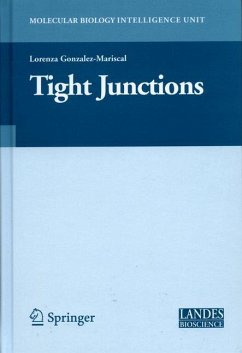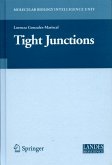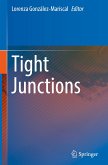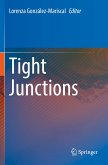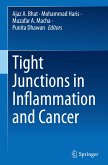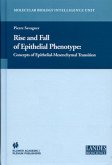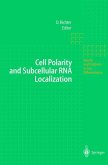- The Evolution of Transporting Epithelium Phenotype
- Occludin, a Constituent of Tight Junctions
- Tight Junction Channels
- JAM Family Proteins: Tight Junction Proteins That Belong to the Immunoglobulin Superfamily
- Cingulin, A Cytoskeleton-Associated Protein of the Tight Junction
- ZO Proteins and Tight Junction Assembly
- TJ Proteins That Make Round Trips to the Nucleus
- Tight Junctions and the Regulation of Epithelial Cell Proliferation and Gene Expression
- Tight Junction Proteins and Cancer
- Regulation of Paracellular Transport across Tight Junctions by the Actin Cytoskeleton
- Regulation of Tight Junctions' Functional Integrity: Role of a Urinary Factor, Lipids and Ouabain
- Tight Junctions during Development
- Tight Junctions and the Blood-Brain Barrier
- Tight Junctions in CNS Myelin
- Tight Junction Modulation and Its Relationship to Drug Delivery
- Index.
ight junctions (TJs) are cell-ceil adhesion belts that encircle epithelial and endothelial cells at the limit between the apical and the lateral Tmembrane. These junctions are crucial for the establishment of separate compartments in multicellular organisms and for the exchange of substances between the internal milieu and the external environment. The perception of TJs has changed over the years. From being regarded as static paracellular seals, they have come to be perceived as dynamic structures that adjust their morphol ogy and function in response to physiological, pharmacological and pathologi cal challenges. The roles that TJs play in epithelial and endothelial cells has also widened, and nowadays this structure is regarded not only as a fence that limits within the membrane, the movement of proteins and lipids between the apical and basolateral membranes, or as a gate that regulates in a size and charge selec tive manner the transit of ion and molecules through the paracellular pathway, but also as a structure integrated by molecules that participate in the control of cell proliferation. These observations highlight the importance of understand ing TJ physiology in order to develop effective strategies for the treatment of pathological conditions such as cancer and autoimmune diseases. This broader perception of TJs is reflected in all the chapters of the book and has been attained thanks to the identification in recent years of a wide array of proteins that constitute TJs in epithelial and endothelial cells as well as in central nervous system myelin.
Hinweis: Dieser Artikel kann nur an eine deutsche Lieferadresse ausgeliefert werden.
- Occludin, a Constituent of Tight Junctions
- Tight Junction Channels
- JAM Family Proteins: Tight Junction Proteins That Belong to the Immunoglobulin Superfamily
- Cingulin, A Cytoskeleton-Associated Protein of the Tight Junction
- ZO Proteins and Tight Junction Assembly
- TJ Proteins That Make Round Trips to the Nucleus
- Tight Junctions and the Regulation of Epithelial Cell Proliferation and Gene Expression
- Tight Junction Proteins and Cancer
- Regulation of Paracellular Transport across Tight Junctions by the Actin Cytoskeleton
- Regulation of Tight Junctions' Functional Integrity: Role of a Urinary Factor, Lipids and Ouabain
- Tight Junctions during Development
- Tight Junctions and the Blood-Brain Barrier
- Tight Junctions in CNS Myelin
- Tight Junction Modulation and Its Relationship to Drug Delivery
- Index.
ight junctions (TJs) are cell-ceil adhesion belts that encircle epithelial and endothelial cells at the limit between the apical and the lateral Tmembrane. These junctions are crucial for the establishment of separate compartments in multicellular organisms and for the exchange of substances between the internal milieu and the external environment. The perception of TJs has changed over the years. From being regarded as static paracellular seals, they have come to be perceived as dynamic structures that adjust their morphol ogy and function in response to physiological, pharmacological and pathologi cal challenges. The roles that TJs play in epithelial and endothelial cells has also widened, and nowadays this structure is regarded not only as a fence that limits within the membrane, the movement of proteins and lipids between the apical and basolateral membranes, or as a gate that regulates in a size and charge selec tive manner the transit of ion and molecules through the paracellular pathway, but also as a structure integrated by molecules that participate in the control of cell proliferation. These observations highlight the importance of understand ing TJ physiology in order to develop effective strategies for the treatment of pathological conditions such as cancer and autoimmune diseases. This broader perception of TJs is reflected in all the chapters of the book and has been attained thanks to the identification in recent years of a wide array of proteins that constitute TJs in epithelial and endothelial cells as well as in central nervous system myelin.
Hinweis: Dieser Artikel kann nur an eine deutsche Lieferadresse ausgeliefert werden.

